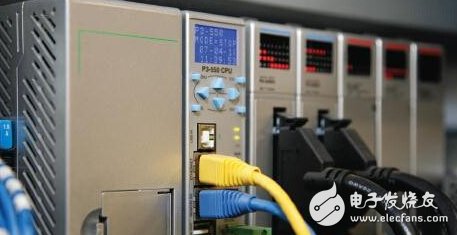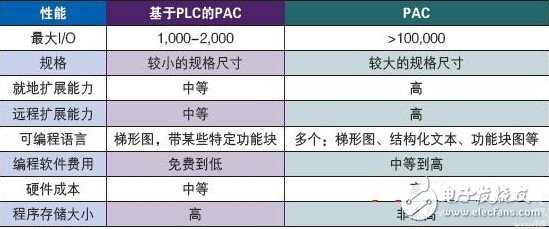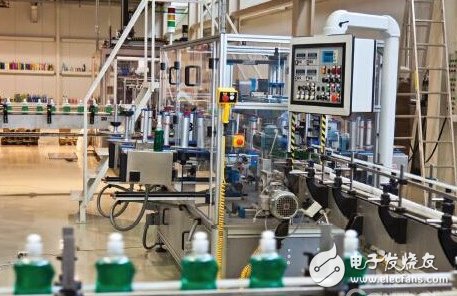There have been too many articles on the comparison between programmable logic controllers (PLCs) and programmable automation controllers (PACs). Yes, there are indeed differences between the two terms, but are these differences really important? ? In some cases, it may not be important, because with the continuous development and improvement of PLC, it has the function and performance comparable to PAC.
PLC-based PAC (PLC-based PAC), this is a word coined by the author. In terms of features, functions, and suitable applications, in most applications, PLC-based PAC can effectively replace PAC because of the considerable overlap between the two. Although there are many similarities between PLC-based PAC and PAC, there are still some key differences that need to be discussed. Let us first look for some clues from the evolution of PLC to see how the PLC-based PAC grows step by step.
The origin of the name
In the first generation of PLC, PLC was mainly used to replace hard-wired relays and pneumatic timers. In fact, PLC was called PLC, PC for short. But very quickly, in the early 1980s, the name PC was dominated by personal computers, so the term PLC was often used. The name PAC appeared about 15 years ago, and its appearance may be to distinguish the most powerful PLC from other lesser brethren.
PLC-based PACs may be a better name than PACs because they incorporate the advances of PLCs and other technologies over the past few decades. Manufacturers have adopted proven, more powerful PLC hardware designs and will apply the latest, low-cost technologies from the PC and mobile devices sectors. They combine these technological advancements to meet changing user needs and provide a PLC-based PAC system.

Common function
Now, if you want to find an industrial controller that doesn't have the many features of a PLC or PAC, it can be very difficult. However, the definition of PAC is very different. Many manufacturers have difficulties in distinguishing between PAC and PLC. The reason is that there are many important but common features between the two. These common features and functions include:
1, high-speed CPU, providing fast scanning;
2, based on the function of the tag name;
3. Large capacity onboard storage;
4. The document is stored in the controller;
5. Task management program organization;
6, a variety of built-in network protocols;
7, data collection.
There are many common features, and more are new technologies than branches of a certain category. For example, a faster scan time. Compared to most PCs at the beginning of the millennium, the latest PLC and PAC processor chips are processed at much higher frequencies. This technological advancement applies to all levels of controllers. This is more of a preference for manufacturers in terms of CPU performance and cost. These high-speed CPUs are needed in many machine control areas and in other applications where very fast execution speeds are required.
Other common functions are part of the natural progression or evolution of PLC. A controller based on a tag name is an example. As PLCs are becoming part of an integrated system, this makes it possible to move from fixed address design to tag name based systems compared to standalone controllers. In this way, multiple platforms within the same control system can share a common tag name database, which can significantly reduce the development of the front end.
Lower cost memory makes it possible to tag-based systems. Tag names take up more memory than typical fixed-address PLC systems, so they need more total memory to achieve the same application functionality. Larger memory also allows vendors to store program files on the controller. This is a huge convenience for on-site troubleshooting, and it also solves a common problem: when these files are not saved in the controller, it is easy to lose the tag name interpreter file.
For some PLCs and PACs, the task manager gives the impression and the method of managing the program is similar. Program organization is the ideal tool for large projects that span multiple devices/processes.
Common communication
Providing integrated or optional communication protocols is often a supplier's choice preference, not a technical limitation. Although there are still some high-end controllers with only a single communication port, many middle and low-end PLCs (even from the late 1990s to the early 2000s) have multiple communication ports built in. There are many options for implementing additional ports and communication protocols.
PLC and PAC common Ethernet protocols, including EtherNet/IP and ModbusTCP/IP. These communication protocols provide a convenient way to connect to a variety of devices and systems, including ERP and commercial systems. Many PLCs and PACs also provide serial Modbus and ASCII communication. These communication methods are popular on bar code scanners, information announcements, electronic scales, frequency converters, temperature controllers, timers/counters, and other devices.
Important difference
Although there are many similarities between PLC and PAC, there are still some key differences between them. Most of these differences are related to high-end features. In some very large and complex applications, PAC systems may be required due to other requirements such as the number of meters, remote equipment, extensive process control and monitoring. These differences are generally related to hardware configuration, extended functionality, and cost (see Table 1).
The overall size of the application is often an important feature for differentiation. Many small PLCs do have the ability to extend the initial boundary of the control system by adding a bus controller master. Whether you use multiple racks or use dedicated remote I/O, both can scale I/O points to 100,000 or more. This can significantly reduce the labor required for system configuration and development. Some PLC-based PACs are updated to have a smaller volume and, therefore, are much smaller than PAC in many cases, which allows for more external I/O.

There are also some cross-border features that were originally classified as special controllers, such as redundancy, multi-language programming, and specific hardware specifications.
Although PLC-based PACs may only have ladder logic and certain functional blocks to simplify motion control, most PACs have the five programming languages ​​listed in IEC61131-3:
Ladder diagram
2. Function block diagram;
3. Instruction list;
4. Structured text;
5. Sequential function diagram.
PLC-based PAC in action
Today, PLC-based PACs can be used in many applications, from simple machine control to higher-end PAC applications (see Figure 2). In order to achieve this, many new technologies have been applied in order to achieve a lower cost and better controller than the original control system.
Technological advances have enabled suppliers to offer faster, more functional controllers with smaller physical dimensions. This enables PLC-based PACs to be applied to a wider range of machine control applications. Many of these machines require faster scanning times, making their manufacturers more competitive and meeting design specifications.

Whether it is a PLC-based PAC or a PAC, this large filling line is well controlled, and the final choice depends on the specific function and performance requirements.
In the past, machine manufacturers faced a dilemma: if you use a smaller PLC, you can meet the I / O point requirements and physical space constraints, but in terms of performance is not satisfactory. An alternative is to choose a large PLC or PAC system. In most cases, for simple machine control needs, large controllers are a bit overkill, but they can't be used, otherwise they can't meet a specific application.
The PLC-based PAC system is ideal for small, cost-critical applications, and it can be used in applications that need to process hundreds or thousands of analog channels. Many of these controllers can log data points to files stored on an integrated storage port and then retrieve them via a standard web browser using a built-in web server.
The large-capacity storage capabilities of a typical PLC-based PAC system make it ideal for creating 1-D or 2-D matrices to track product, quality characteristics, transportation data, and customer information. PLC-based PAC with tag-based features means that it is very easy to interface with HMI/SCADA, OPC servers and databases.
PAC meets high-end challenges
With more domain-specific integrations, the PAC environment offers unique benefits. Advanced motion control and vision applications often require the power of PAC and are two very good examples. The use of a single PAC platform to integrate multi-axis coordinated motion, trigger visual systems, and collect inspection results has its advantages in these areas.
On larger, but more expensive, PAC platforms, manufacturers typically offer options for programmable security and other specific features. These very special requirements have a small share of the market, but they are important for certain users.
Choose the right solution
When designing a control system, it should not be selected in accordance with the definition of PAC, PLC or PLC-based PAC. Instead, users should determine their controller needs based on their specific application and choose the most appropriate product.
Regardless of whether the application is machine control, motion control, process control, surveying and data acquisition, distributed control and enterprise interconnection, or a combination of the above features, the definition of the controller should be based on the application requirements and the functions of the controller.
The low voltage inverter produced by FGI covers every automation application requirement in the industrial plant. This low voltage converter is mainly used for controlling and adjusting the speed and torque of three-phase AC asynchronous motors. Using the latest technological advancements in AC motor speed control, the FGI high performance low voltage drives meet the needs of smart machines by increasing system reliability, improving process control and minimizing total installed project costs.
Low Voltage Drives,Low Voltage Vfd,Low Voltage Ac Drive,Low Voltage Inverters,Low Voltage Converter,Low Voltage Boost Converter
FGI SCIENCE AND TECHNOLOGY CO., LTD , https://www.fgi-tech.com